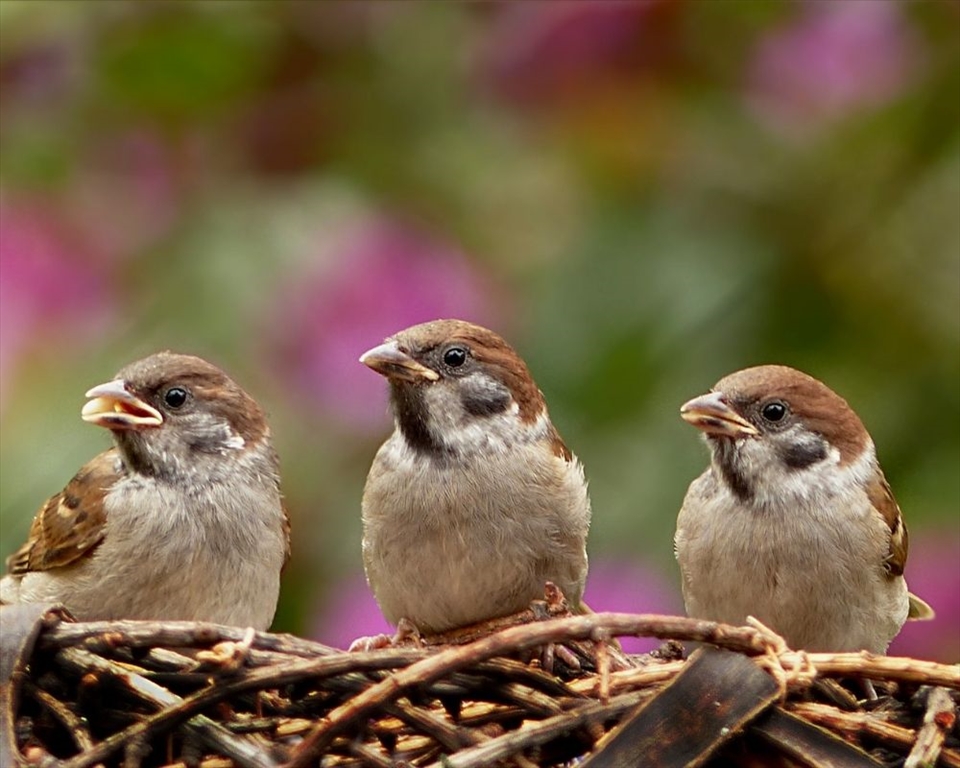Helping Wildlife Thrive in Your Garden
 We are very lucky to have an abundance of wildlife that can be found right in our own backyards! Our local wildlife ranging from birds, squirrels, hedgehogs, insects, and much more, all play an important role in maintaining nature’s balance.
We are very lucky to have an abundance of wildlife that can be found right in our own backyards! Our local wildlife ranging from birds, squirrels, hedgehogs, insects, and much more, all play an important role in maintaining nature’s balance.
Unfortunately, many issues including habitat loss, climate change, and the use of pesticides, have led to the decline of certain species in the region. This week, as part of Garden Wildlife Week [6th-12th June], we want to take a look at how we can lend a helping hand to our wildlife through mini ‘wildlife havens’ in our own gardens! Take a look at some of our tips below:
Provide Shelter and Food for Birds
Adding a bird box and feeders to your garden is a great way to help birds of all kinds thrive. Make sure that any bird houses and feeders are placed high up in a sheltered area, out of harm’s way especially if there are cats nearby. Feeders are a great support for birds, especially during the colder winter months. It’s ideal to offer a variety of food such as peanuts, seeds, kitchen scraps and fat balls to appeal to a wide range of bird species.
Compost
Composting has lots of great benefits for both you and local wildlife. Making your own compost is a great natural way to enrich your own soil and provides a habitat for the likes of worms and insects.
Explore Your Green Thumb
Flowers aren’t only great to look at, but also provide a food source for many insects. Test out your gardening skills by growing a variety of plants, especially those that are native to Northern Ireland. Choose plants that provide lots of pollen and nectar for as long as possible.
Ease Off on Lawn Mowing
Now as the warmer weather eases in, many of us are regularly mowing our gardens again. Longer grass is one of the rarer habitats for our wildlife but is vitally important shelter and food resource for small animals. If you can spare it, a small wild patch of your garden would be ideal. By letting your grass grow that little bit longer you will make space for lots of different plant and insect species. Even reducing the frequency of your lawn mowing will give time for the likes of daises to grow which will provide a helpful nectar boost for our bees.
Add a Pond
Adding a shallow pond to your garden may not be a possibility for everyone, however it is a fantastic habitat for wildlife. A key element to building your pond it to ensure that the wildlife has a way to get in and out easily – this can be done by placing stones and branches around its perimeter. It’s also best to ensure that the pond has partial sunlight and shade the majority of the time and to be mindful of any domestic pets if they are in the garden.
Keep a Gap in Your Fence
If you can, ensure there is a small gap at the bottom of your garden fencing which will help the likes of hedgehogs and frogs etc. move easily through gardens.
In addition to providing your local wildlife with an ecosystem to thrive in, it’s also important to keep an eye if they happen to end up in any difficulty. If you spot any injured wildlife, please make sure to call the USPCA on 028 3025 1000.
Back








